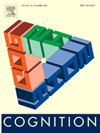Refreshing the conversation about adaptation and perceived numerosity: A reply to Yousif, Clarke and Brannon
IF 2.8
1区 心理学
Q1 PSYCHOLOGY, EXPERIMENTAL
引用次数: 0
Abstract
Yousif et al. (2024) have raised a number of pertinent objections to the idea that number adaptation is a straightforward account of the readily-observable aftereffects that affect perceived numerosity. Their criticisms appear well-motivated, but their particular version of the old-news proposal, involving specific dots, may be insufficiently abstract given that adaptation accumulates. Two new experiments are presented that are meant to buttress their critique by (1) confirming their predictions concerning neutral adaptation, and (2) re-evaluating related claims concerning number vs. density comparisons that have been widely accepted. Present behavioral evidence dissociating effects of adapter size, adapter number and adapter density, supports the idea that density adaptation is implicated as a primary source of most phenomenologically-compelling aftereffects of perceived numerosity.
Experiment 2 was preregistered on AsPredicted.org. The pre-registration is available at the following link: https://aspredicted.org/PC7_2ZB
The full raw data sets for the two experiments reported her are available on OSF at the following links:
Experiment 1: https://osf.io/b9qwy/?view_only=73beb62d9c2046c3aa08cdeb96cd5cca
Experiment 2: https://osf.io/6ax5j/?view_only=723ceb0b44da47dba99e56db12db02a9
更新关于适应和感知数量的对话:对Yousif, Clarke和Brannon的回复
Yousif等人(2024)提出了许多相关的反对意见,反对数字适应是对影响感知数量的可观察后果的直接解释。他们的批评似乎是有动机的,但他们对旧新闻提议的特殊版本,涉及具体的点,可能不够抽象,因为适应是累积的。提出了两个新的实验,旨在通过(1)证实他们关于中性适应的预测,以及(2)重新评估已被广泛接受的关于数量与密度比较的相关主张来支持他们的批评。目前的行为证据表明,适配器大小、适配器数量和适配器密度的分离效应,支持了密度适应是感知数量的大多数现象学上引人注目的后果的主要来源的观点。实验2在AsPredicted.org上进行了预注册。预注册可在以下链接获得:https://aspredicted.org/PC7_2ZBThe她报告的两个实验的完整原始数据集可在OSF上通过以下链接获得:实验1:https://osf.io/b9qwy/?view_only=73beb62d9c2046c3aa08cdeb96cd5ccaExperiment 2: https://osf.io/6ax5j/?view_only=723ceb0b44da47dba99e56db12db02a9
本文章由计算机程序翻译,如有差异,请以英文原文为准。
求助全文
约1分钟内获得全文
求助全文
来源期刊

Cognition
PSYCHOLOGY, EXPERIMENTAL-
CiteScore
6.40
自引率
5.90%
发文量
283
期刊介绍:
Cognition is an international journal that publishes theoretical and experimental papers on the study of the mind. It covers a wide variety of subjects concerning all the different aspects of cognition, ranging from biological and experimental studies to formal analysis. Contributions from the fields of psychology, neuroscience, linguistics, computer science, mathematics, ethology and philosophy are welcome in this journal provided that they have some bearing on the functioning of the mind. In addition, the journal serves as a forum for discussion of social and political aspects of cognitive science.
 求助内容:
求助内容: 应助结果提醒方式:
应助结果提醒方式:


